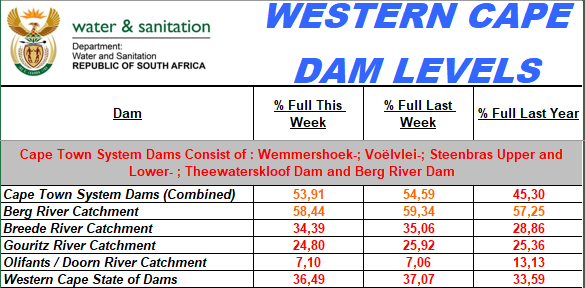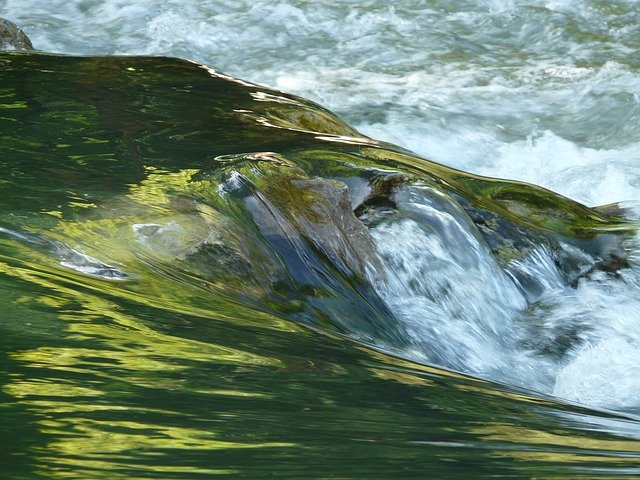The average dam level for the dams which supply the Western Cape is at 36.4%, while the dams that feed only the City of Cape Town are at 53.9%.
Last year, the City’s dam levels were at 45.3%, while the province’s average dam level was 33.5%.

The City of Cape Town’s dam level average considers the following rivers: the Berg River, the Steenbras Lower and Upper rivers, Theewaterskloof dam, Vloëlvlei dam, and the Wemmershoek dam.
The average provincial dam level is determined by combining and calculating the levels of all the feeder dams. These include the Berg River Catchment dam, the Breede River Catchment dam, the Gouritz River Catchment dam, and the Cape Town System dams.
“Our major concerns at the moment remains the central Karoo region and the upper regions of the West Coast. My department is in constant communication with the South African Weather Services with regards to the outlook for the winter season. The predictability remains largely uncertain at this stage,” said Anton Bredell, Western Cape MEC for Local Government, Environment Affairs and Development Planning.

He also urged consumers to use water responsibly.
“Municipalities have been supplied with 300 water tanks to assist vulnerable communities during the Covid-19 pandemic. In addition, existing contingencies including boreholes continue to operate in communities most at risk. This has been the case for the past five years,” he added.
Picture: Pixabay






